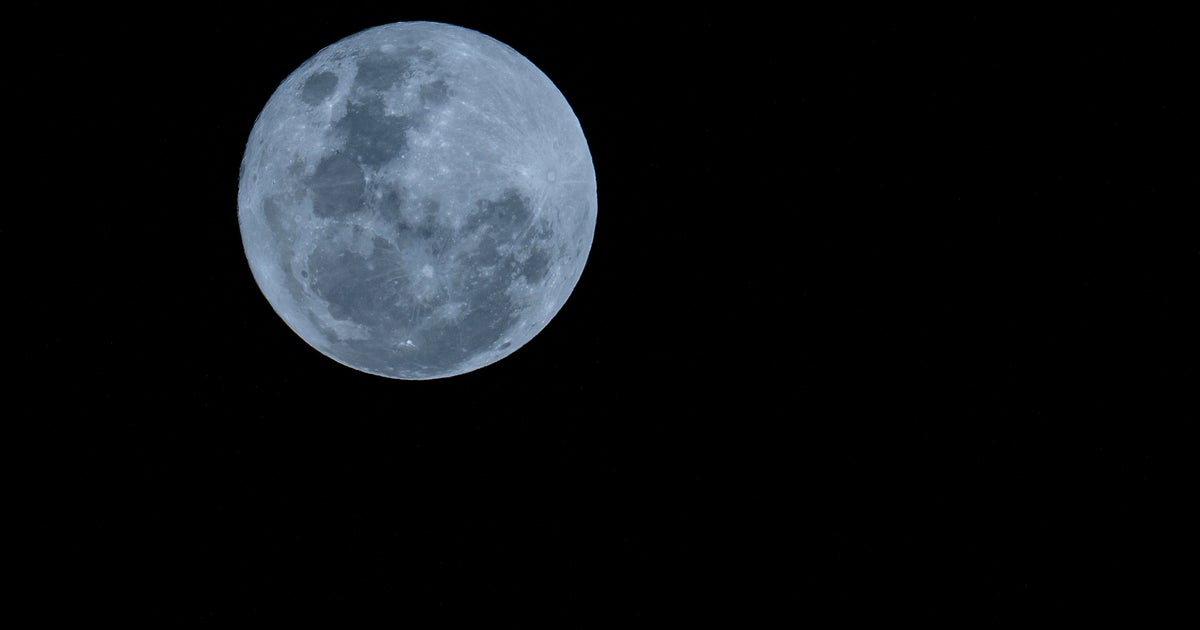August’s supermoon blue moon, the first of 2024’s four consecutive supermoons, will appear full from Sunday through Wednesday, giving astronomy fans a rare show when they look to the skies.
The full moon will reach peak illumination on Monday at 2:26 p.m. EDT., but it will appear full for three days, NASA said. The Old Farmer’s Almanac details specific moonrise times for different ZIP codes across the U.S.
When and how you can see the August supermoon blue moon peak?
While the full moon will peak on Monday at 2:26 p.m. EDT, it will first appear full on Sunday morning, according to NASA. It will continue to appear full through early Wednesday morning.
Around 98% of the moon’s nearside will be illuminated by the sun on Sunday, according to NASA. By the next day, 100% of the moon’s nearside will be illuminated and about 99% of it will be illuminated by the sun on Tuesday.
The moon can be observed with the unaided eye, binoculars or a telescope.
What is a supermoon?
Supermoons occur when the moon’s orbit is closest to Earth at the same time as the moon is full, according to NASA. The moon’s distance from Earth varies between about 221,457 miles and 252,712 miles.
During this month’s supermoon peak, the moon will be around 225,288 miles from Earth. It will be even closer to Earth in September: roughly 222,005 miles. In October, the full moon will be about 222,095 miles from Earth. The last supermoon in the series — November’s — will be around 224,385 miles from Earth.
Supermoons appear bigger than the average full moon; it’s similar to the size difference between a quarter and a nickel, according to NASA. They’re also about 16% brighter than an average moon.
When are the next supermoons this year?
August’s full moon is the first of four consecutive supermoons this year. The full moon in September will reach peak illumination on Tuesday, Sept. 17. It’s known as the Harvest Moon.
The full moon the following month, known as the Hunter’s Moon, peaks on Thursday, Oct. 17. The final supermoon will be November’s Beaver Moon, which peaks on Friday, Nov. 15.
According to NASA, the full moons in September and October will be virtually tied for the closest full moons of the year.
Will the blue moon look blue?
August’s full moon is not just a supermoon. It’s also a blue moon, but those hoping to see a shade like cerulean, cobalt or navy blue when they check out the moon are out of luck. A blue moon has two meanings when it comes to solar phenomena, and neither one is related to color.
A blue moon refers to the third full moon in a season with four full moons, as is the case with this August’s full moon, according to NASA. The term is also used to refer to the second full moon in a month with two full moons.
Does August’s full moon have a special name?
August’s full moon is the Sturgeon Moon, according to the Old Farmer’s Almanac. The name comes from the giant lake sturgeon of the Great Lakes and Lake Champlain, which was easily caught during this part of the summer.
This month’s full moon is also known as the Red Moon, Corn or Green Corn Moon, the Barley Moon, the Herb Moon, the Grain Moon and the Dog Moon, according to NASA.

